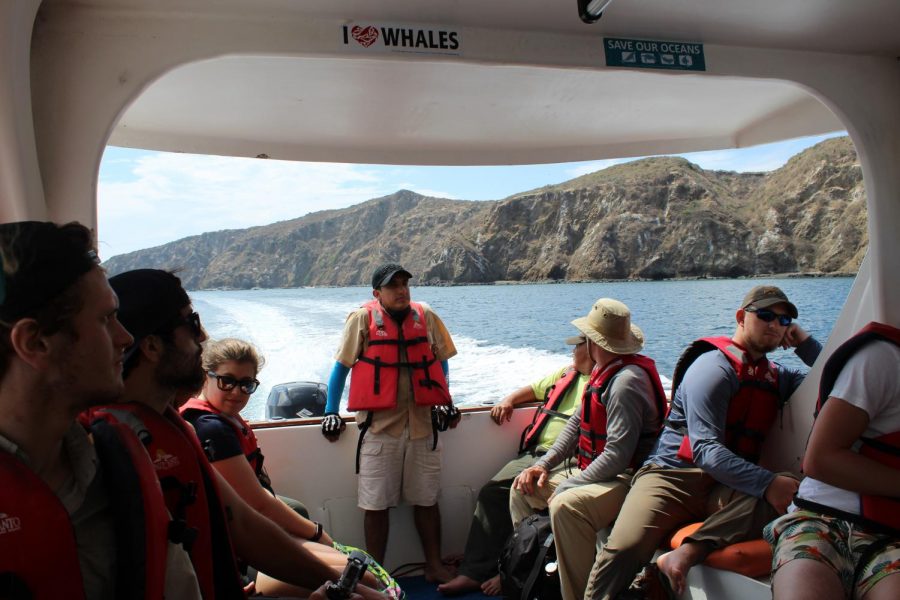Ecologists-in-training explore Ecuador
Instead of doing Christmas break the cold and old-fashioned way, 10 students participated in a study abroad somewhere warmer. Ecuador, to be exact.
These 10 students engaged in a 10-day excursion to Ecuador to study the different ecosystems and animals. Ecuador, for its namesake, is located on the equator bordering the Pacific Ocean.
From Dec.16 through Dec. 26, the students explored tropical rainforests, the Andes Mountains, dry forests and visited an active volcano which also had a glacier on top. The expedition was led by Professor Scott Tiegs and his teaching assistant Gary Miller. This study abroad opportunity was offered for biology, chemistry and environmental science majors but was centered around the study of ecology.
“Ecology is interactions between organisms and their environment,” Tiegs said.
The students started their ecological journey in the Amazon. The east part of Ecuador is home to part of the extensive Amazon rainforest ecosystem. This part of Ecuador is known for being humid and hot constantly, and this is the only part of the country that has weather like that.
Tiegs and his group then continued into the Andes Mountains where some of the cloud rainforest preserves and volcanoes are located. Cloud rainforests are located at high altitudes and therefore within the clouds. The mist is what makes the trees lush since the precipitation is always there.
The Andes were the cooler portion of the trip, because they were at a high elevation and a glacier was present making the weather colder. Some of the students even recall seeing a group of wild alpacas.
“A couple students got altitude sickness while being so high up,” student Morgan Morin stated.
While in the Andes, there were also Andean fox and condor sightings. As the students proceeded with their learning experience, they took an eight hour bus ride to the west coast of the country while stopping halfway to spend a night in the country’s capital Quito. This is where the students learned more about the human culture than the birds and the trees.
The west coast consisted of an entirely different ecosystem than the previous two portions.
“The landscape became more scrub-like and the further west you went, the towns became more rural,” Morin explained.
The ecosystem on the west side of Ecuador is called a dry rainforest. The Andes block most of the rain from the Amazon moving west so the terrain becomes dryer. The area also had palm plantations and various fields dotted across the landscape.
This trip was different—for the past seven years, the group has traveled to Costa Rica to study the ecosystems. This is the first time this sort of group from Oakland University traveled to Ecuador to study ecology.
“The class provides first hand experience and these students essentially are ecologists in training,” Tiegs said.
As for the class itself, it was three credits toward a student degree and the cost of the trip was roughly $4,000.
Despite escaping from the Michigan winter, there were significant learning opportunities involved and each student had to keep track of specimens and a journal as well.
“[This trip] is one of the most impactful experiences… and I encourage them [students] to do it if they can,” Tiegs said.





